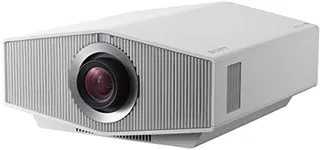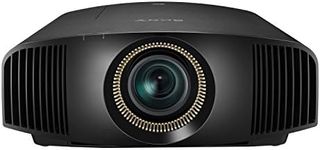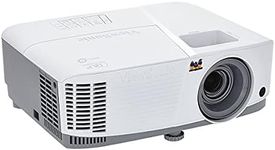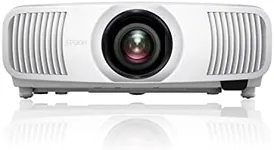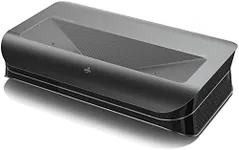Buying Guide for the Best 3D Projectors
Choosing the right 3D projector can significantly enhance your viewing experience, whether it's for home entertainment, gaming, or professional presentations. To make an informed decision, it's important to understand the key specifications that determine the performance and suitability of a 3D projector for your needs. Here are the essential specs to consider and how they can guide you in selecting the best fit for you.ResolutionResolution refers to the number of pixels that make up the image displayed by the projector. Higher resolution means more detailed and sharper images. Common resolutions include 720p, 1080p, and 4K. If you plan to use the projector for high-definition movies or gaming, a higher resolution like 1080p or 4K is recommended. For basic presentations or casual viewing, 720p may suffice.
BrightnessBrightness is measured in lumens and indicates how well the projector can display images in various lighting conditions. Higher lumens mean brighter images. If you will be using the projector in a room with ambient light, look for a projector with higher lumens (3000 or more). For dark rooms or home theaters, lower lumens (1500-2500) can still provide a good experience.
Contrast RatioContrast ratio measures the difference between the darkest and brightest parts of the image. A higher contrast ratio results in more vibrant and dynamic images. For a more immersive 3D experience, look for projectors with a higher contrast ratio (e.g., 10,000:1 or higher). Lower contrast ratios may result in washed-out images, especially in darker scenes.
3D CompatibilityNot all projectors support 3D content. Ensure the projector you choose is 3D-compatible and check the type of 3D technology it uses (e.g., active or passive 3D). Active 3D generally provides better image quality but requires special glasses, while passive 3D is more affordable and uses simpler glasses. Consider your preference and the availability of 3D content you plan to watch.
Throw DistanceThrow distance is the distance between the projector and the screen. It determines how large the image will be at a given distance. Short throw projectors can produce large images from a short distance, making them ideal for small rooms. Long throw projectors require more space but can be suitable for larger venues. Measure your room and choose a projector with a throw distance that fits your space.
Input/Output PortsThe types and number of input/output ports determine the connectivity options of the projector. Common ports include HDMI, USB, VGA, and audio outputs. Ensure the projector has the necessary ports to connect to your devices, such as Blu-ray players, gaming consoles, or computers. More ports provide greater flexibility in connecting multiple devices.
Lamp LifeLamp life indicates how long the projector's lamp will last before needing replacement, measured in hours. Longer lamp life means less frequent replacements and lower maintenance costs. Typical lamp life ranges from 2000 to 5000 hours. If you plan to use the projector frequently, look for models with longer lamp life to ensure durability and cost-effectiveness.
